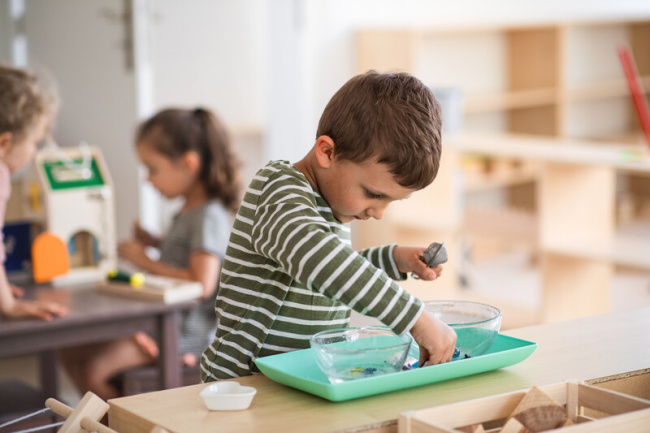
Photo by
Boxercab Deciding to homeschool can set off a variety of emotions: anxiety, excitement, relief, determination, and confusion. ¡Que locura! Here are some tips for dealing with each one.
Anxiety
For some, anxiety is a constant companion. First, you agonize over whether or not to homeschool, and then once you’ve made your decision, you may experience some more anxiety because you have no idea where or how to start the process. Or you may lay awake feeling unsure about your ability to teach your child. Maybe you worry you might miss something, or teach the wrong way. You may be concerned about your child’s socialization, or whether or not she is “keeping up” with other kids her age.
Below are some things that got me through those first few months until I became more comfortable and confident in our homeschool experience.
How do I begin the process?
Remember that your first few months of homeschooling will be a transition time that allows you to determine how your child learns and to find the best structure, method, and techniques that work for you. I tried to put aside my worry and embrace the change and uncertainty, knowing that we had begun an exciting journey that ends with tremendous benefits.
I also discovered that if I were stressed out, my child would pick up on it and become anxious, as well. So, sometimes, I had to work hard to be relaxed and open to new ideas and to enjoy the ride.
For more about how to start, see “Confusion” below.
Will I really be able to be my child’s teacher?
You already are. From the moment your child was born, you have been teaching him or her your family’s outlook on life and the way you interact with others. Padres are the most important people in a child’s life, serving as role models and mentors. Homeschooling is no different.
What if I mess up and teach something wrong or forget something important?
Are you going to forget something? Absolutely. I’m sure I have. We all do. But that’s not the point. The goal is NOT to make our children know it all, but rather to care about it all. I try to remember that my goal is to teach them how to learn and to enjoy the process.
Will my child get enough interaction with other children?
Unless you live in a box in the middle of the desert, chances are your child will be fine. Part of successfully homeschooling your child is supplementing your curriculum with field trips or extracurricular activities. Your child will meet and interact with a variety of people and our goal is to help them develop meaningful relationships, not forcing friendships.
What if my child doesn’t keep up with the other kids his age?
Stop. Right. There. Each child is different regardless of whether he is homeschooled or in a public/private school. As a teacher and a parent, I try to keep in mind that my job is not to compare them to others, but to help them reach their full potential, learning at the pace that is best for them. I can see distinct differences in both my children. They excel in different areas and are developing at different stages. I try to keep in mind that my children will grasp the concept when they are ready.
Confusion
I made the mistake of going to a homeschool convention before I began. While I was amazed at all the products available, I was COMPLETELY OVERWHELMED. I think that I would really enjoy one now that I have some experience under my belt.
Since this was my first time homeschooling, the best thing I did was begin with a complete curriculum from an accredited company. (If you don’t want to spend so much money, you can often find curricula for sale on eBay or other discount sites.) This gave me the guidance I needed until I become comfortable enough to branch out on my own. Once you know what works for you and your child, you can wean yourself away from the program. Who knows? You may find that you prefer to use one throughout your entire homeschooling journey.
Relief
I was so relieved just to have the decision to homeschool completed. At least 80% of my anxiety evaporated – maybe more. The great part is that this allowed me to begin to finally move forward and start the journey.
Determination
This is a great feeling to spur you through the (sometimes) confusing process of starting up a homeschool program. The main thing that kept me going sometimes, was the realization that NO ONE is going to care more about my child’s education. If I didn’t fight to figure it all out, no one else would.
Excitement
I have tried to hold on to this feeling as long as I can. Sometimes, when I feel it ebbing away, I give myself a boost by reading the successes of other homeschooled families. I try to get together with other homeschoolers in our area once every week or two. I also try to stay connected on-line by subscribing to some great newsletters or blogs. I found that the best way to stimulate my excitement is through discovery – of new, easy, different, free, or fun activities or programs that I know my child will love.
Remember that your child will follow your lead and if school is monotonous and boring to you, chances are it is the same for your child. So don’t hesitate to mix it up a bit, or change the schedule.
And we always try to celebrate my child’s successful navigation of difficult concepts or subjects. We can all benefit from a break every now and then.
Con mucho cariño…
Did you enjoy this article? Are you thinking about homeschooling your child? Let me help! My book - The Latino Family's Guide to Homeschooling - covers everything you see here and more.









